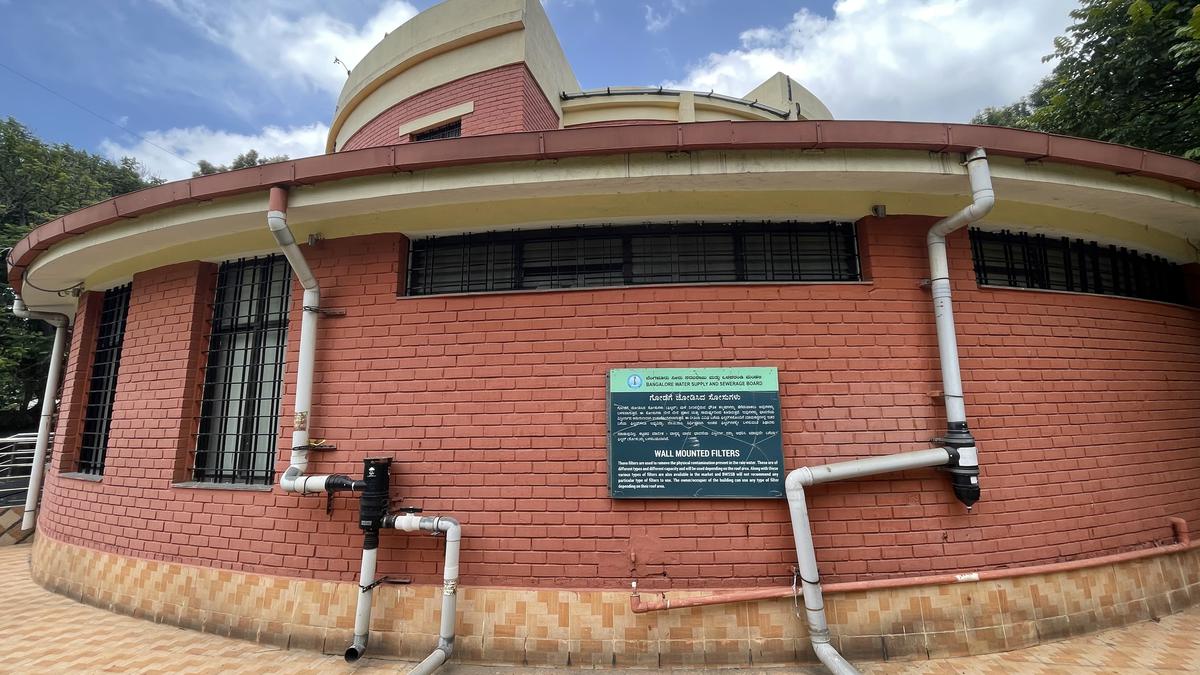
Tackling Bengaluru’s flash floods with Sponge City systems, underground storage tanks Premium
The Hindu
Year after year, flash floods have played havoc with Bengalureans, particularly those in and around low-lying pockets. Erratic rains fuelled by climate change concerns give them no time to prepare, as a month’s rainfall pours down in a few hours. The frequency of these high-intensity events has increased dramatically, demanding urgent but smart solutions.
Year after year, flash floods have played havoc with Bengalureans, particularly those in and around low-lying pockets. Erratic rains fuelled by climate change concerns give them no time to prepare, as a month’s rainfall pours down in a few hours. The frequency of these high-intensity events has increased dramatically, demanding urgent but smart solutions.
So why not build massive underground tanks in low-lying areas to let flood waters rush in? Why not let the forces of nature, the push of gravity and human ingenuity combine to let the excess water settle safely, minimizing human suffering? Could this stored water be used later to address the issues linked to a dry season?
Globally, such systems have worked although they demand a huge initial investment. In the German city of Munich, for instance, 13 underground tanks were built to arrest the recurring floods. The tanks were constructed in big vacant plots such as Bengaluru’s civic amenity sites. Each tank had two tiers of 8-metre depth. Flood waters would flow into the tanks to be pumped out later when required.
Flood-prone Tokyo and Pittsburgh too had built such tanks. The one in Tokyo, arguably the world’s largest underground water tank, is larger than a football field. Fifty-nine pillars, each 18m tall, support the tank’s ceiling.
The models look promising. But not many are convinced. Their contention: Why invest in such expensive projects when you can clean up the city’s existing tanks and lakes - many of which are in low-lying areas -, and use them for rainwater storage? This is a mammoth task yet feasible, but the stormwater drains that lead to these water bodies are horribly polluted with sewage and solid waste.
“Bengaluru has a storage problem, not a water problem,” notes architect Naresh Narasimhan, who had conceptualised K-100, a joint project by the Bruhat Bengaluru Mahanagara Palike (BBMP) and Bangalore Water Supply and Sewerage Board (BWSSB) to transform the Rajakaluves into clean waterways flanked by aesthetic urban spaces. The K-100 leads to Bellandur lake, one of the city’s largest.
For years, the BBMP has been trying to solve the drain capacity problem through a grand remodeling exercise. But even after years, nearly 175km of drain network are today without any flood protection structures. The Palike has now set aside ₹1,200 crore to build concrete walls on either side of the drain. So far, about 686km of the city’s 859km of primary and secondary stormwater drains (Rajakaluves) have been remodeled.

Andhra Pradesh CM Chandrababu Naidu inaugurates CNG, PNG projects in Rayalaseema region. Andhra Pradesh has the unique distinction of being the second largest producer of natural gas in India, thanks to the Krishna-Godavari (KG) Basin, he says, adding the State will lead the way towards net-zero economy.










